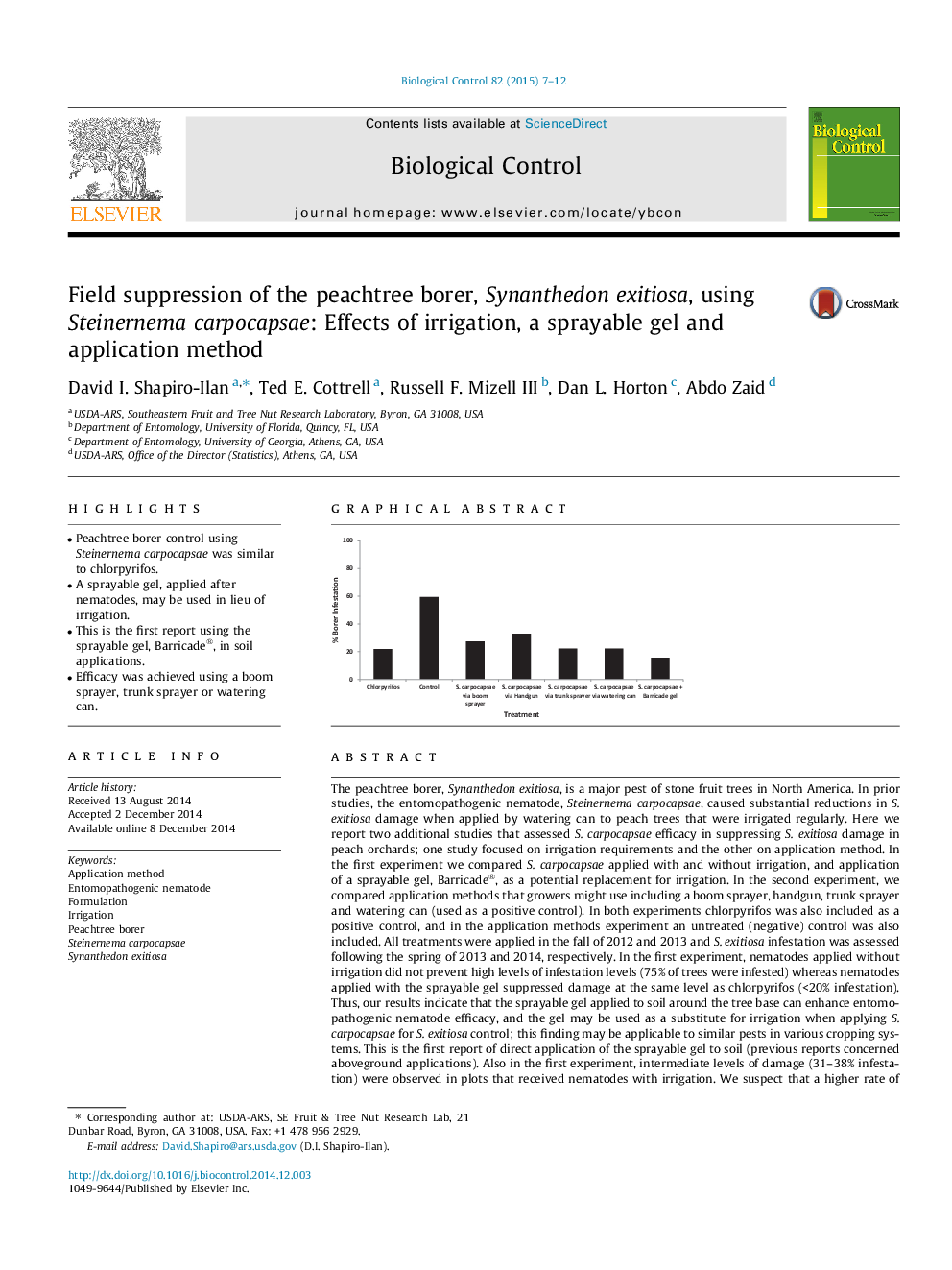| Article ID | Journal | Published Year | Pages | File Type |
|---|---|---|---|---|
| 4503812 | Biological Control | 2015 | 6 Pages |
•Peachtree borer control using Steinernema carpocapsae was similar to chlorpyrifos.•A sprayable gel, applied after nematodes, may be used in lieu of irrigation.•This is the first report using the sprayable gel, Barricade®, in soil applications.•Efficacy was achieved using a boom sprayer, trunk sprayer or watering can.
The peachtree borer, Synanthedon exitiosa, is a major pest of stone fruit trees in North America. In prior studies, the entomopathogenic nematode, Steinernemacarpocapsae, caused substantial reductions in S. exitiosa damage when applied by watering can to peach trees that were irrigated regularly. Here we report two additional studies that assessed S. carpocapsae efficacy in suppressing S. exitiosa damage in peach orchards; one study focused on irrigation requirements and the other on application method. In the first experiment we compared S. carpocapsae applied with and without irrigation, and application of a sprayable gel, Barricade®, as a potential replacement for irrigation. In the second experiment, we compared application methods that growers might use including a boom sprayer, handgun, trunk sprayer and watering can (used as a positive control). In both experiments chlorpyrifos was also included as a positive control, and in the application methods experiment an untreated (negative) control was also included. All treatments were applied in the fall of 2012 and 2013 and S. exitiosa infestation was assessed following the spring of 2013 and 2014, respectively. In the first experiment, nematodes applied without irrigation did not prevent high levels of infestation levels (75% of trees were infested) whereas nematodes applied with the sprayable gel suppressed damage at the same level as chlorpyrifos (<20% infestation). Thus, our results indicate that the sprayable gel applied to soil around the tree base can enhance entomopathogenic nematode efficacy, and the gel may be used as a substitute for irrigation when applying S. carpocapsae for S. exitiosa control; this finding may be applicable to similar pests in various cropping systems. This is the first report of direct application of the sprayable gel to soil (previous reports concerned aboveground applications). Also in the first experiment, intermediate levels of damage (31–38% infestation) were observed in plots that received nematodes with irrigation. We suspect that a higher rate of irrigation would have improved efficacy. In the second experiment, the boom sprayer, trunk sprayer and watering can methods of nematode application resulted in S. exitiosa infestations that were similar to the chemical insecticide standard treatment (chlorpyrifos) and below levels in the non-treated control, whereas the handgun treatment was not different from the untreated control or chemical standard.
Graphical abstractFigure optionsDownload full-size imageDownload as PowerPoint slide
